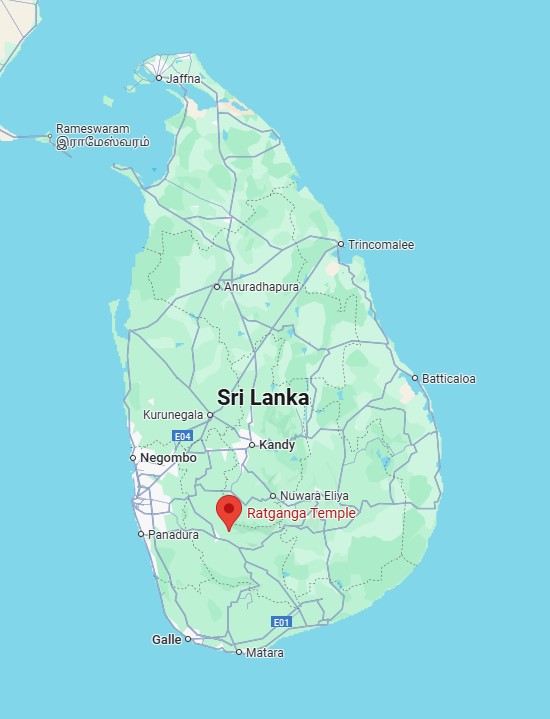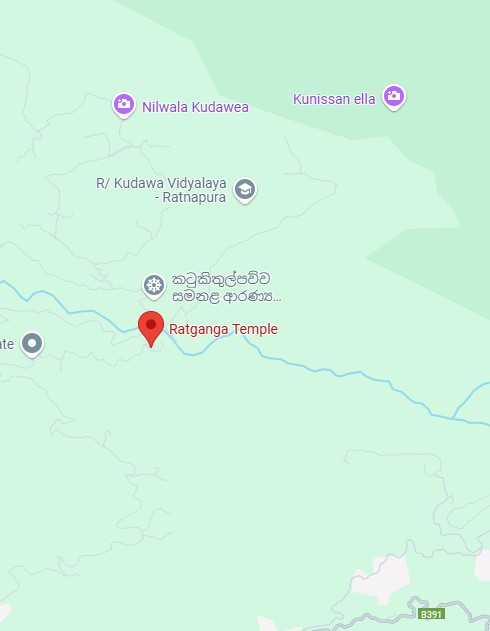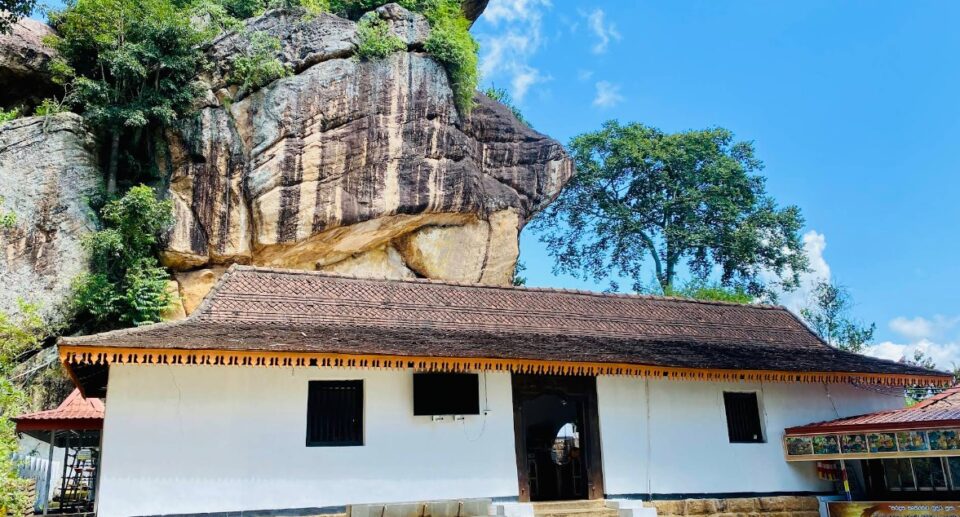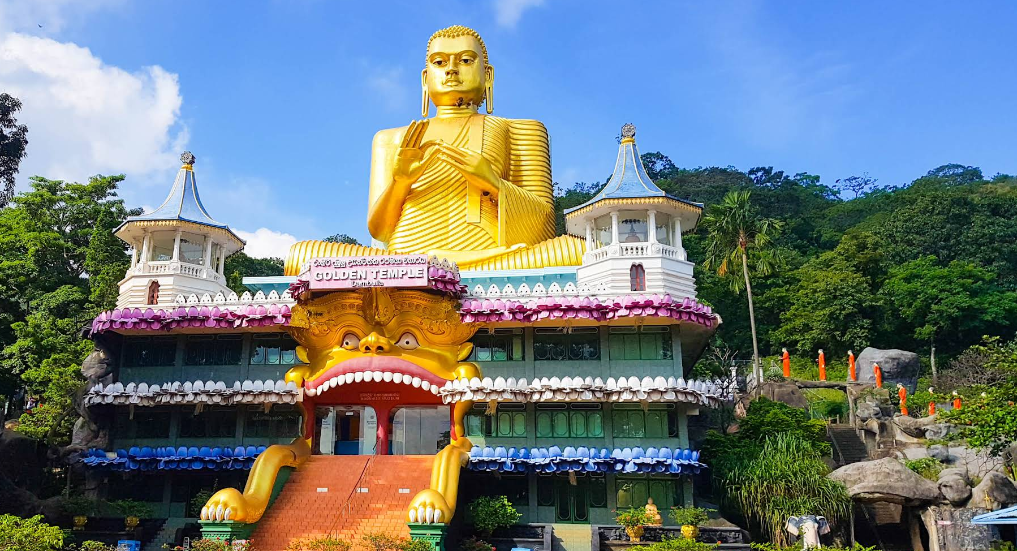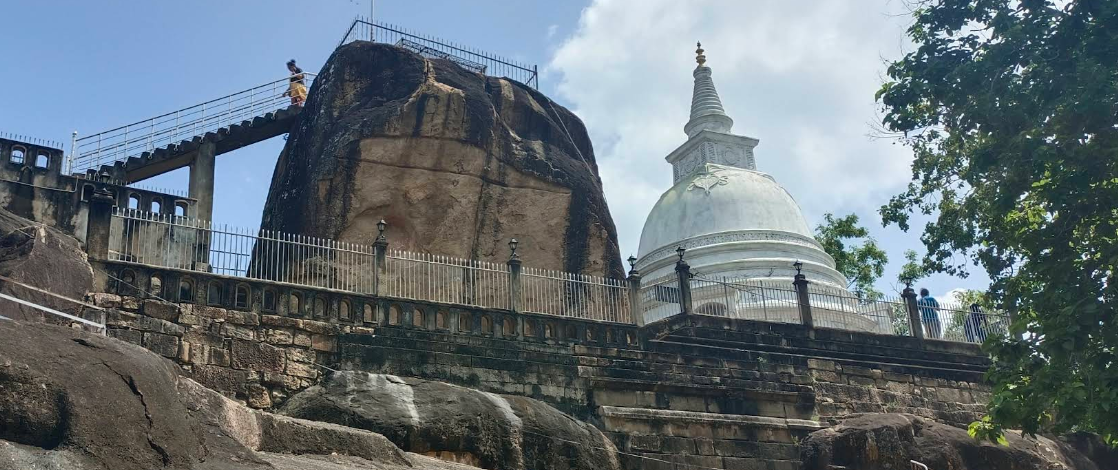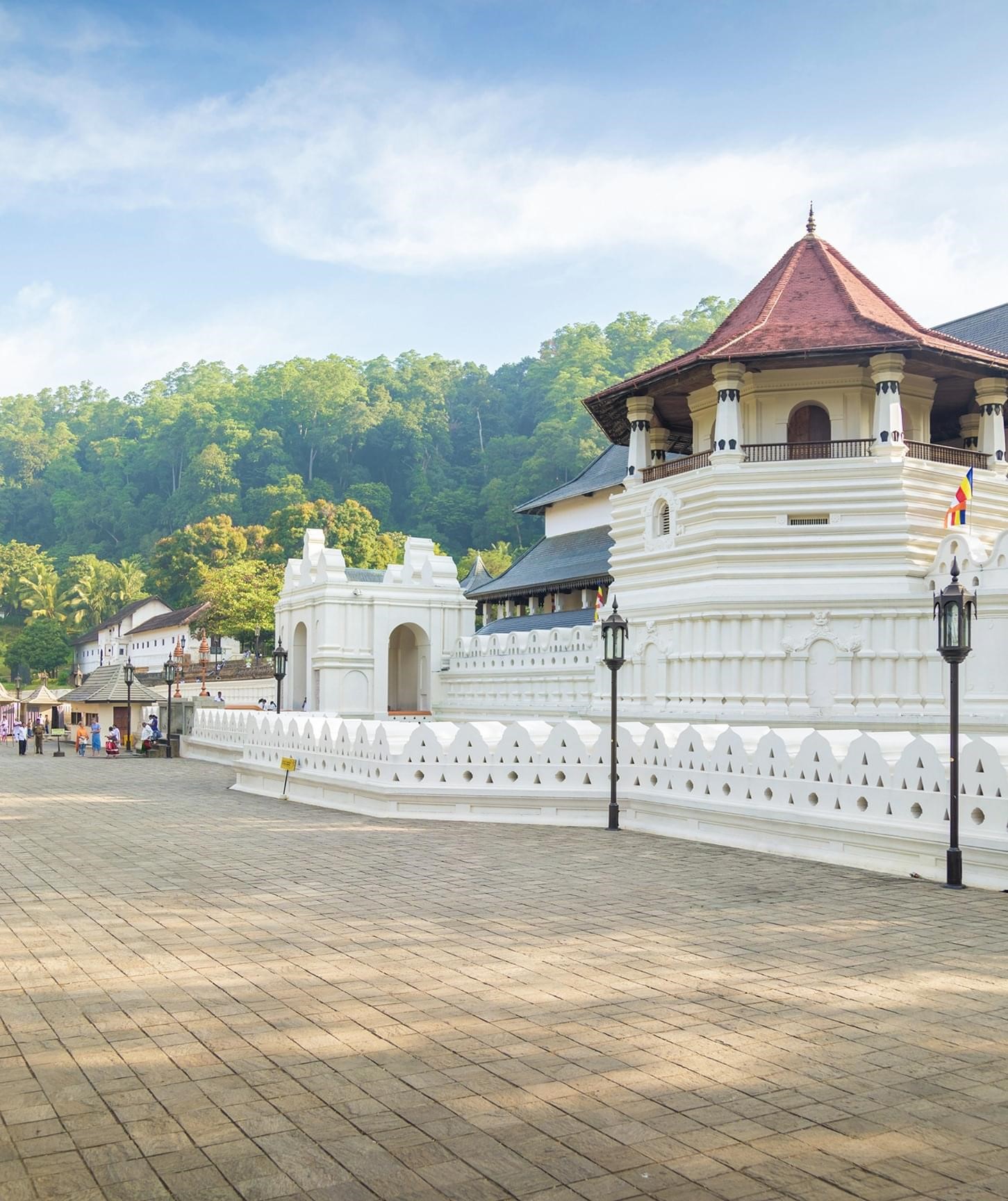Rathganga Vihara: The Sacred Punchi Dambadiva of Sri Lanka
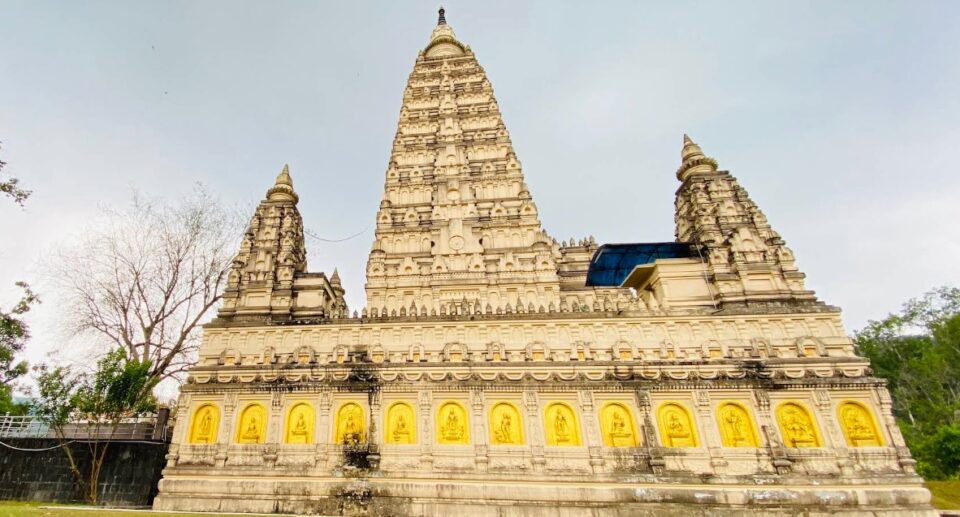
Hidden in the rolling mist and thick vegetation of Sri Lanka’s Ratnapura District are some of the island nation’s most sacred and iconic Buddhist temples: the Rathganga Vihara, more respectfully known as Punchi Dambadiva. Meaning “Little Dambadiva,” this beautiful temple complex was constructed as a symbolic recreation of the major sites in the life of Lord Buddha in India, or Dambadiva, to Sri Lankan Buddhists.
Far more than a simple collection of buildings and statues, Rathganga Vihara is a site of deep devotion, architectural wonder, and spiritual wonder. Travelers and pilgrims from all corners of the earth visit to walk in the symbolic footsteps of the Buddha without having to undertake the long pilgrimage to India, experiencing peace, holiness, and amazement in a setting lovingly created to bring to mind holy sites of the past.
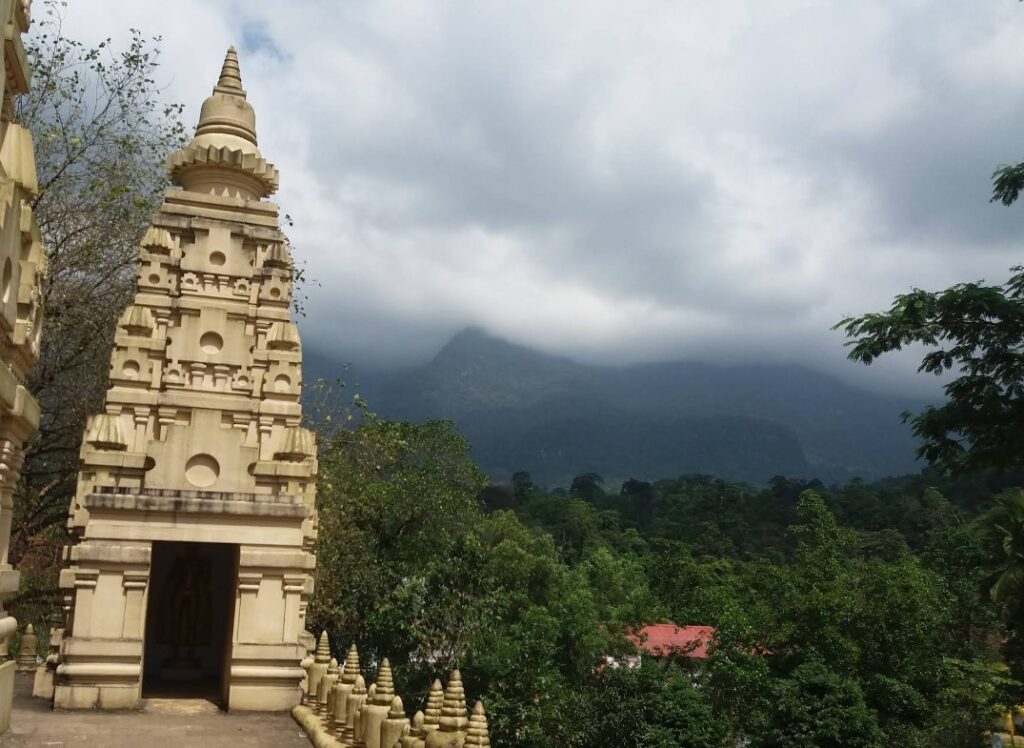
A Vision Born of Devotion
The vision of creating a miniature Dambadiva in Sri Lanka was the dream of Ven. Girimale Chandraloka Thera, a dedicated monk who had a vision to bring Sri Lankan Buddhists access to the same spiritual experience as making a pilgrimage to the original holy sites in India—but without the expense and trouble of foreign travel. It was established in 1981, and the temple has grown into a huge complex, with some buildings, replicas, statues, and sacred gardens that replicate the spirit of Buddhism’s holiest geography.
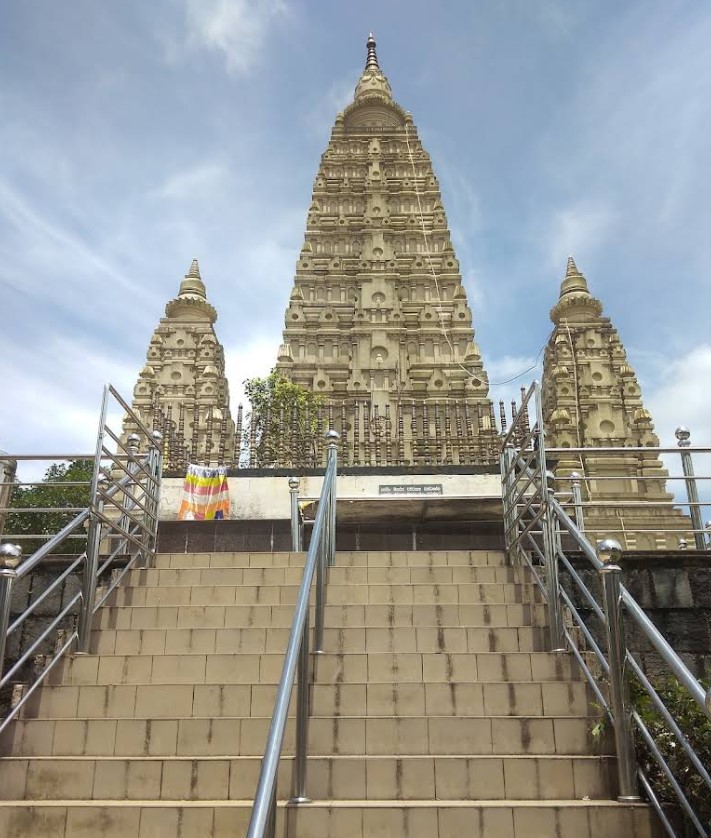
His vision was unselfish but profound: to build something where any layperson, monk, or foreign visitor could relive the Buddha’s journey—through birth, enlightenment, and preaching, up to final Nirvana.
Symbolic Replicas of the Four Sacred Sites
Rathganga Vihara has been designed particularly to recreate the four most sacred sites in Lord Buddha’s life:
Lumbini – where Prince Siddhartha was born.
Bodh Gaya – where he attained enlightenment beneath the Bodhi tree.
Sarnath (Isipathana) – where he preached his first sermon.
Kushinagar – where he attained Parinirvana (final passing away).
Each of these symbolical places is marked with stunning sculptures, well-maintained buildings, and interpretive signboards, offering educational and devotional value for tourists.
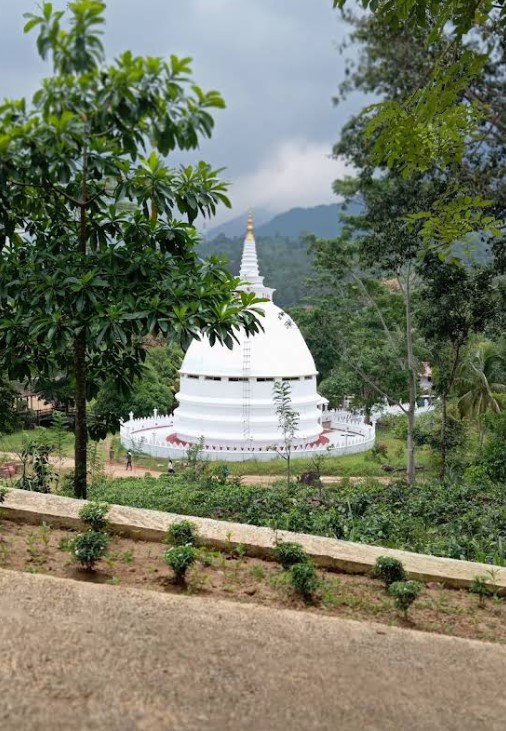
Highlights of Rathganga Vihara
- Suvisi Vivarana Mandiraya (Hall of the 24 Buddhas)
This wondrous hall is perhaps the spiritual and architectural highlight of the temple. There are 24 beautifully carved images of the previous Buddhas who provided prophecies (vivarana) to the future Gautama Buddha in his earlier births. These statues are life-size and are installed in a high and peaceful hall with paintings from the Jataka stories, representing the Bodhisattva’s long journey through samsara. - Two-Storey Stupa (Dagoba)
Eccentrically constructed on two levels, the stupa is a singular edifice in Sri Lanka. It is both a shrine and an observatory, allowing its worshippers to do pradakshina (sacred circumambulation) on two levels. Inside, relics and statues embody the teachings of the Buddha, and the building itself approximates the form of ancient Indian stupas like the one at Sanchi and Amaravati. - Dharma Salawa (Dhamma Hall)
This large hall is capable of seating more than 4,000 individuals and serves as the venue for dhamma sermons, meditation sessions, pirith chanting, and community events. It serves to promote Buddhist learning and unity among the believers. - Marble Buddha Statue
A huge 4.5-ton Buddha statue of white marble, imported and expertly carved, reclines in meditative quiet. The calm face and closely polished surface of the statue embody serenity and clarity—the two states of mind most coveted in Buddhist discipline. - Parinirvana Image
On the Parinirvana terrace, tourists will see a reclining Buddha statue, similar to the one in Kushinagar, India. This peaceful image is the site of the Buddha’s ultimate release from the cycle of rebirth (samsara), and it presents a poignant moment of meditation on impermanence and freedom.
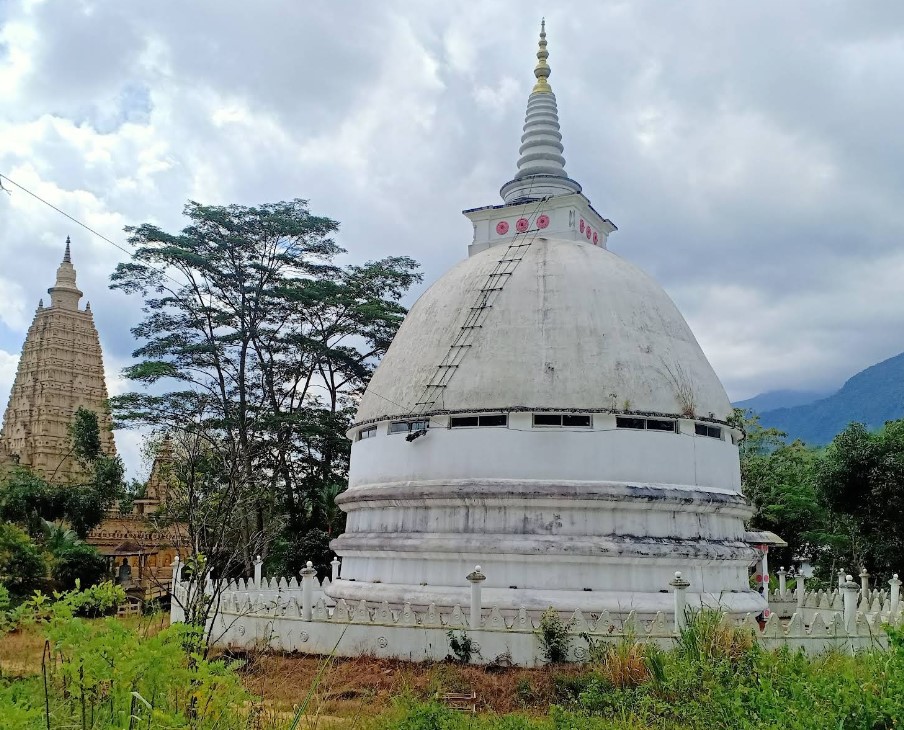
A Spiritual Experience for All
Rathganga Vihara is not merely reserved for devout Buddhists; it’s a sanctuary for anyone seeking peace, contemplation, or the feeling of belonging to the wisdom of the ages. The paths are edged with flowering trees and epigraphy. The cool breeze from the forest hill brings with it a freshness that complements meditation and thought-provoking walking.
Visitors will appreciate the instructive plaques and notices (often in English, Sinhala, and Tamil), while local pilgrims generally offer flowers, incense, and oil lamps. Poya days (full moon Buddhist holidays) see the temple come alive with chanting, meditation, and offerings.
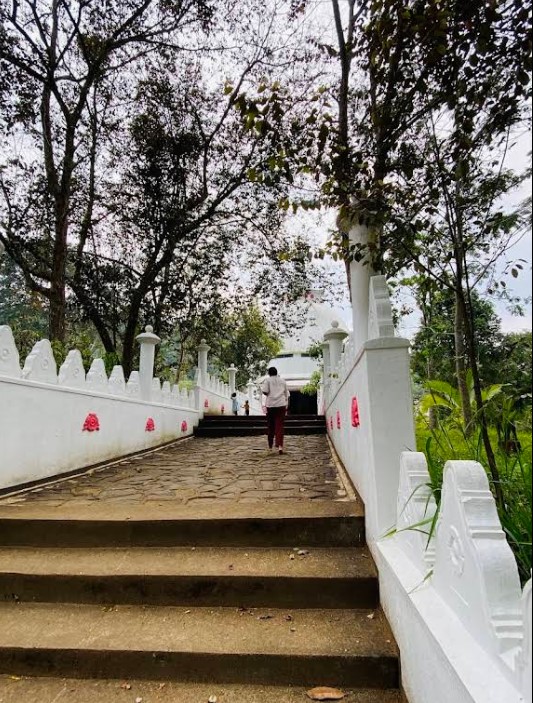
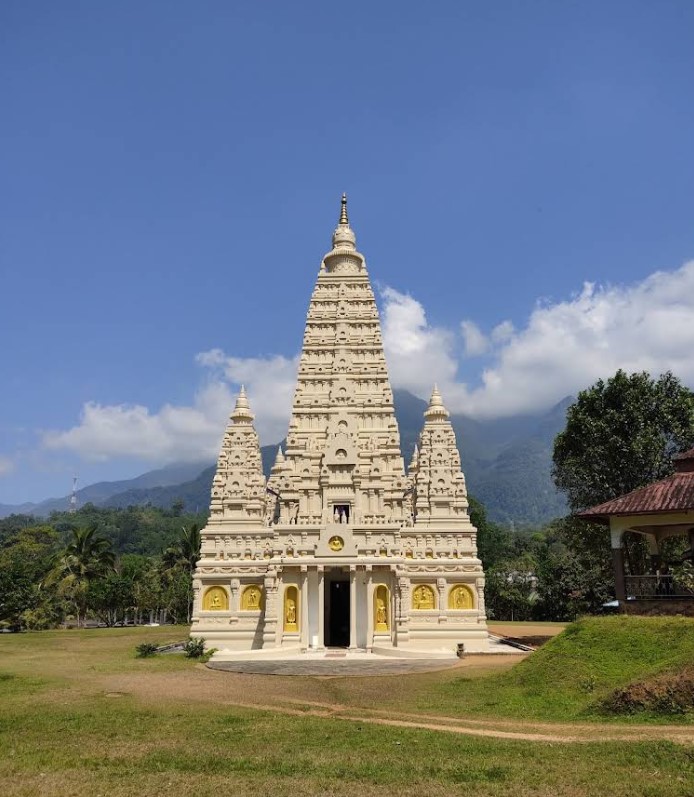
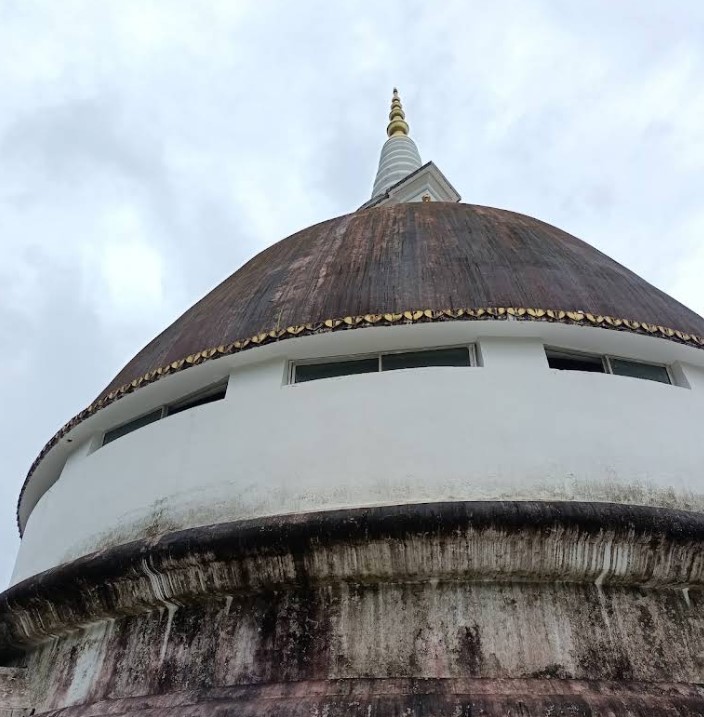
Natural Beauty and Serenity
Surrounded by Rathganga hills, Rathganga Vihara boasts lovely scenery and a brisk climate. The misty mornings, melodious birds, and crackling leaves create just the ambiance for thinking. The temple is ideally blended with nature, showing how religion and nature can be synthesized beautifully with each other.
The forest which encircles the temple is full of endemic birdlife and vegetation, which goes to create the peaceful ambiance of the temple. Early morning visits offer not only peace and quiet but also the chance to watch the forest come alive in the golden light.
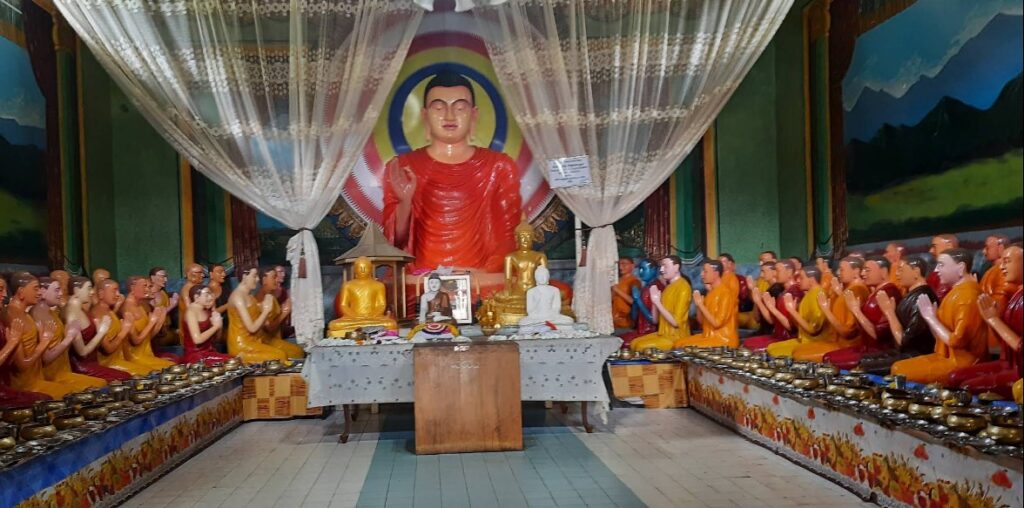
How to Get There
Location: Approximately 8 km from Ratnapura Town, within the Sabaragamuwa Province.
Access. Conveniently located on. The Colombo–Ratnapura main road. From. Ratnapura town, use. tuk-tuk, private car, or public bus.
Road Condition: The road to the temple is well surfaced but. narrow and hilly—drive carefully.
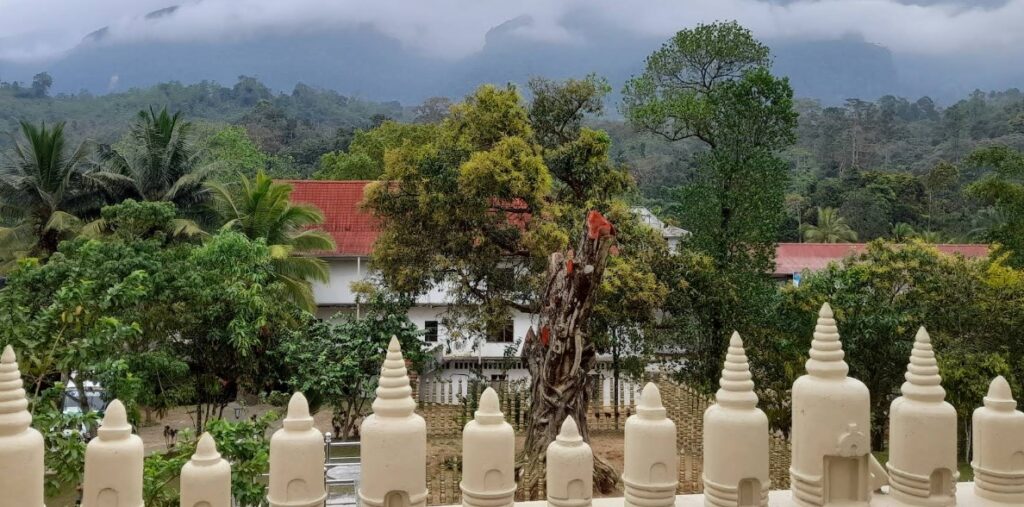
Facilities for Visitors
There are resting areas and washrooms on the premises. There are basic. accommodation and almsgiving (dana) facilities within the. premises for. pilgrims. Shoes should be removed before entering holy sites, and modest clothing is expected.
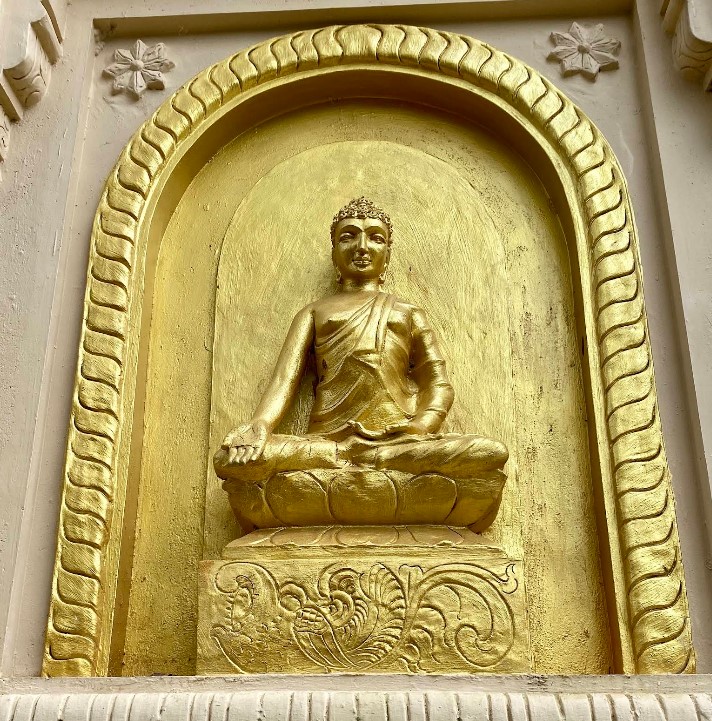
Ideal Time to Visit
Early morning or late afternoon is ideal to avoid heat and congestion.
Travelling during Vesak or Poson Poya can be most holy but more crowded.
Avoid mid-day when it is dry season because of intense heat.
A Spiritual Jewel in the Hills
Rathganga Vihara (Punchi Dambadiva) is not just a monument or temple—it’s an experience of religion. For Buddhists, it’s a practice to adhere to the teachings of the Buddha. For tourists, it’s an insight to Sri Lankan religion and culture. And to all who visit, it is a site of silence, inspiration, and peace.
In a world so often ruled by haste and noise, Rathganga Vihara invites us to slow down, take account, and reconnect—personally, historically, and to a higher purpose.
